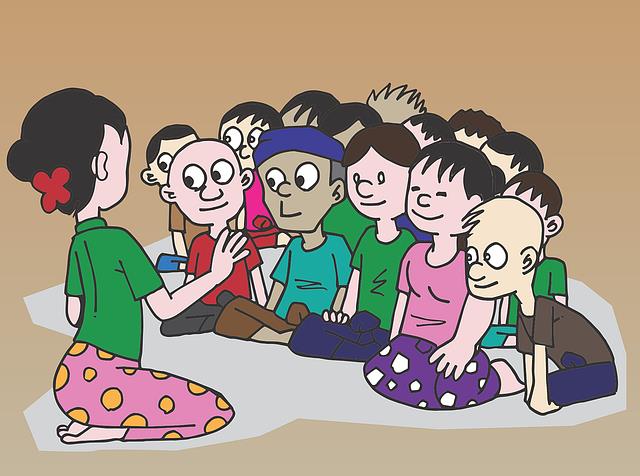
In the realm of education, the pursuit of effective learning techniques is paramount. This article explores seven innovative techniques for mutual learning:
- Peer instruction
- Reciprocal teaching
- Shared problem-solving
- Joint brainstorming
- Learning partnerships
- Discussion groups
- Learning circles
By delving into these methods, educators and learners alike can discover new approaches to enhance their educational journeys.
Each technique offers unique opportunities for collaboration, critical thinking, and active engagement, ultimately fostering a dynamic and enriching learning environment.
Peer Instruction
Peer instruction is an instructional strategy that involves students learning from and teaching each other under the guidance of a facilitator. This approach promotes collaborative learning and interactive teaching, allowing students to actively engage with the material and each other.
In a peer instruction setting, students are encouraged to ask questions, discuss concepts, and provide explanations to their peers. Through this process, they not only deepen their understanding of the subject matter but also develop important communication and critical thinking skills.
The facilitator plays a crucial role in guiding the discussions, ensuring that all students have the opportunity to participate and learn from one another. Peer instruction fosters a sense of autonomy and freedom as students take ownership of their learning and actively contribute to the learning process.
Reciprocal Teaching
Reciprocal teaching is a collaborative instructional approach that involves students taking turns as both teachers and learners. This technique promotes interactive learning and encourages students to actively engage in the learning process. Here are three key aspects of reciprocal teaching:

- Effective questioning: Reciprocal teaching emphasizes the use of open-ended and thought-provoking questions. Students are encouraged to ask questions, challenge ideas, and seek clarification. This fosters critical thinking and deepens understanding.
- Interactive learning: Reciprocal teaching creates an interactive learning environment where students actively participate in discussions, share their perspectives, and contribute to the learning of their peers. This collaborative atmosphere encourages students to construct knowledge together.
- Shared responsibility: In reciprocal teaching, students take turns leading the discussion and guiding their peers. This shared responsibility empowers students to take ownership of their learning and develop leadership skills.
Shared Problem-Solving
Shared problem-solving is an essential aspect of effective learning and collaboration. It involves applying problem-solving strategies in a collaborative and cooperative manner, allowing individuals to share their perspectives, ideas, and solutions.
Collaborative approaches to problem-solving encourage critical thinking, creativity, and the exploration of multiple solutions, resulting in a deeper understanding of the problem and improved outcomes.
Effective Problem-Solving Strategies
One effective strategy for problem-solving is through collaborative efforts, where individuals come together to collectively tackle challenges and find solutions. This approach promotes collaborative problem solving and effective group dynamics, enabling individuals to leverage their diverse perspectives, knowledge, and skills.
When applying effective problem-solving strategies, consider the following:
- Foster open communication: Encourage participants to express their ideas, listen actively, and build upon one another's contributions.
- Establish clear goals: Clearly define the problem to be solved and set achievable objectives to guide the group's efforts.
- Encourage creativity and innovation: Create an environment that values and rewards thinking outside the box, promoting the generation of novel ideas.
Collaborative Approaches to Problem-Solving
Group collaboration and cooperative learning are powerful tools that can greatly enhance problem-solving processes. By working together, individuals can bring their diverse perspectives and expertise to the table, leading to more innovative and effective solutions.
Collaborative problem-solving allows for the pooling of resources, knowledge, and skills, which can lead to a more comprehensive understanding of the problem at hand. Moreover, through active engagement in the problem-solving process, individuals can develop critical thinking and communication skills, as well as learn from one another's experiences and ideas.
This fosters mutual learning and creates a supportive and dynamic group environment where everyone's contributions are valued. Ultimately, collaborative approaches to problem-solving promote a sense of shared ownership and responsibility, leading to more successful outcomes.

Joint Brainstorming
An effective technique for fostering collaborative idea generation is through the use of joint brainstorming. This method encourages individuals to come together and freely share their thoughts and ideas, creating a dynamic environment for creative collaboration.
Here are three ways in which joint brainstorming can enhance the process of generating innovative solutions:
- Diverse Perspectives: Joint brainstorming enables participants to bring their unique perspectives to the table, allowing for a broader range of ideas and insights. This diversity of thought can lead to more innovative and creative solutions.
- Building on Ideas: Through joint brainstorming, participants can build on each other's ideas, expanding and refining them to create even more impactful solutions. This collaborative approach encourages a sense of ownership and shared responsibility for the final outcome.
- Spontaneity and Fluidity: Joint brainstorming encourages a spontaneous and fluid exchange of ideas, where participants can freely express their thoughts without fear of judgment. This uninhibited environment fosters creativity and allows for the exploration of unconventional ideas.
Learning Partnerships
Learning partnerships offer numerous advantages when it comes to peer collaboration and cooperative learning. By working together in a structured partnership, learners can exchange ideas, share knowledge, and support each other's learning process. This collaborative approach fosters a sense of community, promotes active engagement, and enhances critical thinking skills.
Learning partnerships also allow learners to develop effective communication and teamwork skills, which are essential in today's interconnected world. Additionally, by sharing responsibility for their own learning and that of their partner, individuals become more autonomous and self-directed in their learning journey.
Discussion Groups
Discussion groups are a valuable tool for enhancing learning through effective group dynamics and collaborative problem-solving.
By engaging in discussions, individuals can share their perspectives, exchange ideas, and critically analyze various viewpoints.
This interactive process fosters deeper understanding, encourages active participation, and promotes the development of critical thinking skills.

Effective Group Dynamics
How can group dynamics be optimized for effective collaboration and learning?
Effective group dynamics play a crucial role in fostering collaboration and enhancing learning outcomes. To achieve this, group facilitation and team building strategies can be implemented.
Here are three sub-lists that depict the imagery of optimizing group dynamics:
- Clear communication:
- Encourage active listening and respectful dialogue.
- Establish clear guidelines for turn-taking and sharing ideas.
- Foster an inclusive environment where everyone feels comfortable expressing their thoughts.
- Shared goals and roles:
- Define common objectives and ensure everyone is aligned.
- Assign specific roles and responsibilities to promote accountability and equal participation.
- Encourage collaboration and the sharing of expertise to leverage the diverse skills within the group.
- Conflict resolution:
- Develop strategies for effective conflict resolution.
- Encourage open and honest discussions to address conflicts constructively.
- Foster a culture of empathy and understanding to find mutually beneficial solutions.
Collaborative Problem-Solving
To optimize group dynamics for effective collaboration and learning, one effective approach is through the implementation of collaborative problem-solving in discussion groups.
Collaborative problem-solving involves a group of individuals coming together to solve a problem collectively, utilizing their collective knowledge, skills, and perspectives.
In these discussion groups, participants engage in active discussions, sharing their ideas, opinions, and insights. This fosters a collaborative environment where different perspectives are considered, leading to innovative solutions.
Problem-solving techniques such as brainstorming, critical thinking, and analytical reasoning are employed to identify the root causes of a problem and develop effective strategies to address it.

Through group collaboration and the application of problem-solving techniques, discussion groups provide a platform for participants to learn from each other, expand their knowledge, and develop their problem-solving skills.
Learning Circles
Learning circles, a collaborative learning approach, involve small groups of individuals who come together to explore a specific topic or subject in a structured and interactive manner. This approach fosters learning communities where participants can freely exchange ideas and knowledge.
Here are three key aspects of learning circles:
- Knowledge sharing: Learning circles provide a platform for individuals to share their expertise and experiences on a particular subject. Through open discussions, participants can learn from each other's insights, perspectives, and diverse backgrounds.
- Collaboration: Learning circles encourage collaboration among participants. They work together to solve problems, analyze information, and develop a deeper understanding of the topic at hand. This collaborative environment promotes active engagement and enhances critical thinking skills.
- Structured and interactive format: Learning circles follow a structured format that allows for meaningful interactions. Participants engage in activities such as group discussions, brainstorming sessions, and hands-on exercises. This interactive approach promotes active learning and ensures that everyone's voice is heard.
Learning circles provide a dynamic and inclusive learning environment that empowers individuals to freely share and acquire knowledge while fostering collaboration and engagement.
Frequently Asked Questions
How Do Peer Instruction and Reciprocal Teaching Differ From Each Other in Their Approach to Mutual Learning?
Peer instruction and reciprocal teaching differ in their approach to mutual learning. Peer instruction focuses on students teaching each other, while reciprocal teaching involves students taking turns as teachers and learners. Both techniques have their own challenges and limitations in educational settings.
What Are Some Effective Strategies for Facilitating Shared Problem-Solving and Joint Brainstorming in a Group Setting?
Facilitating collaboration and group problem-solving techniques are essential for effective shared problem-solving and joint brainstorming in a group setting. Strategies may include creating a supportive environment, encouraging active participation, and utilizing structured brainstorming techniques to generate ideas.
Forming partnerships and nurturing collaboration are crucial for promoting collaborative learning. By establishing clear goals, fostering open communication, and providing support, individuals can work together effectively to enhance their learning experience and achieve mutual success.

What Are the Key Benefits of Participating in Discussion Groups and Learning Circles?
Participating in discussion groups and learning circles offers key benefits, including enhanced understanding and retention of information, as well as the development of critical thinking skills. These collaborative learning environments promote active engagement and deeper learning.
Are There Any Specific Challenges or Limitations Associated With Implementing These Innovative Techniques for Mutual Learning in Educational Settings?
Implementing innovative techniques for mutual learning in educational settings can present challenges and limitations. These may include difficulties in facilitating effective peer instruction, ensuring equal participation in discussion groups, and managing time constraints in joint brainstorming sessions.